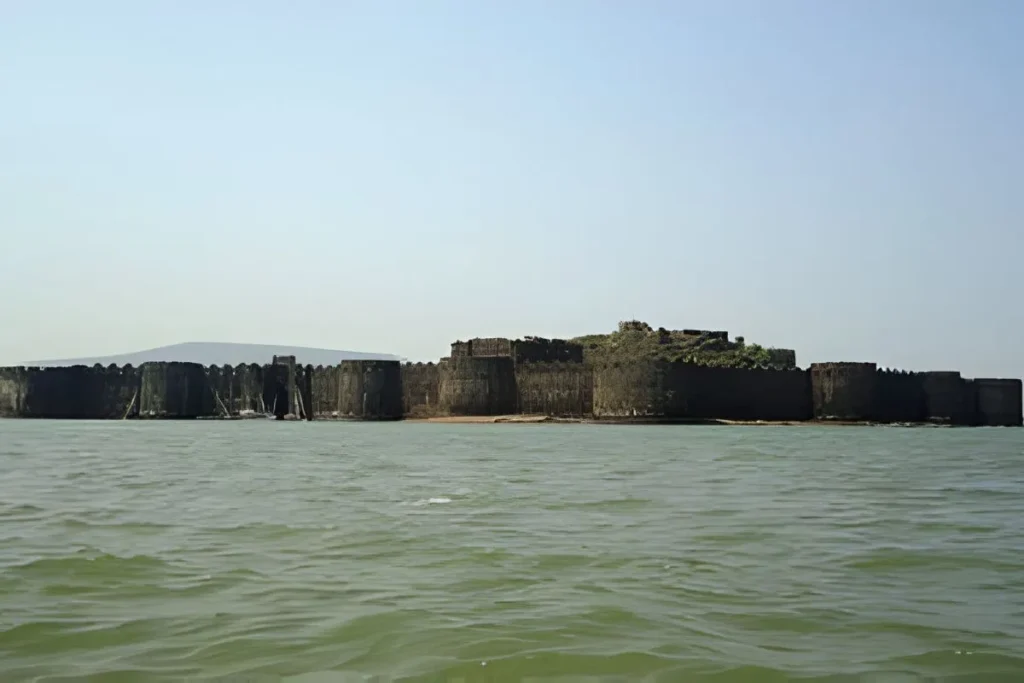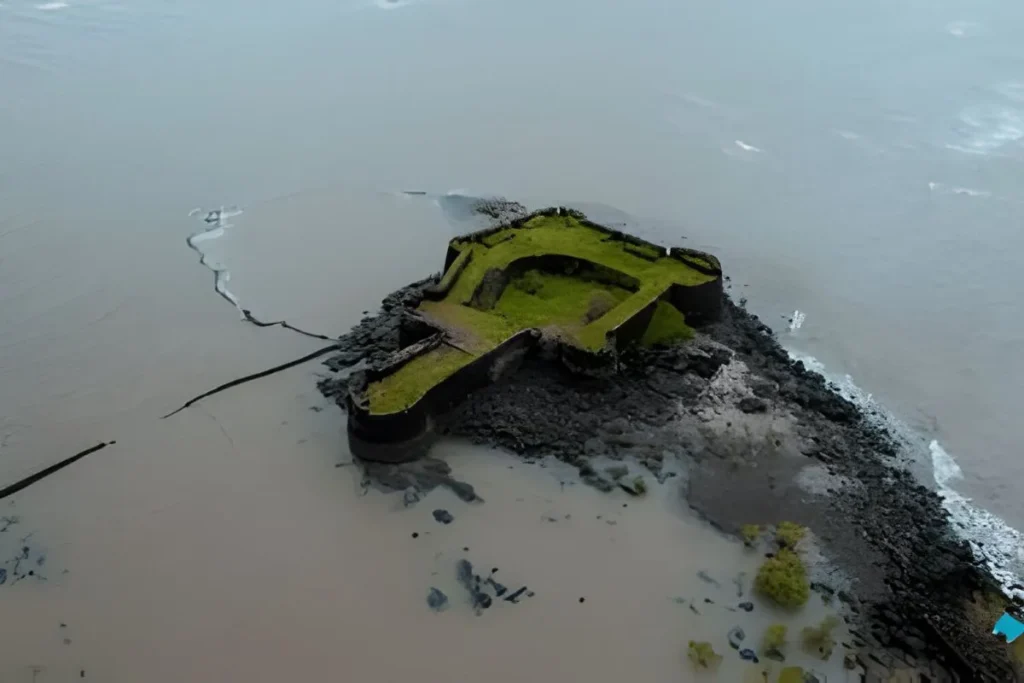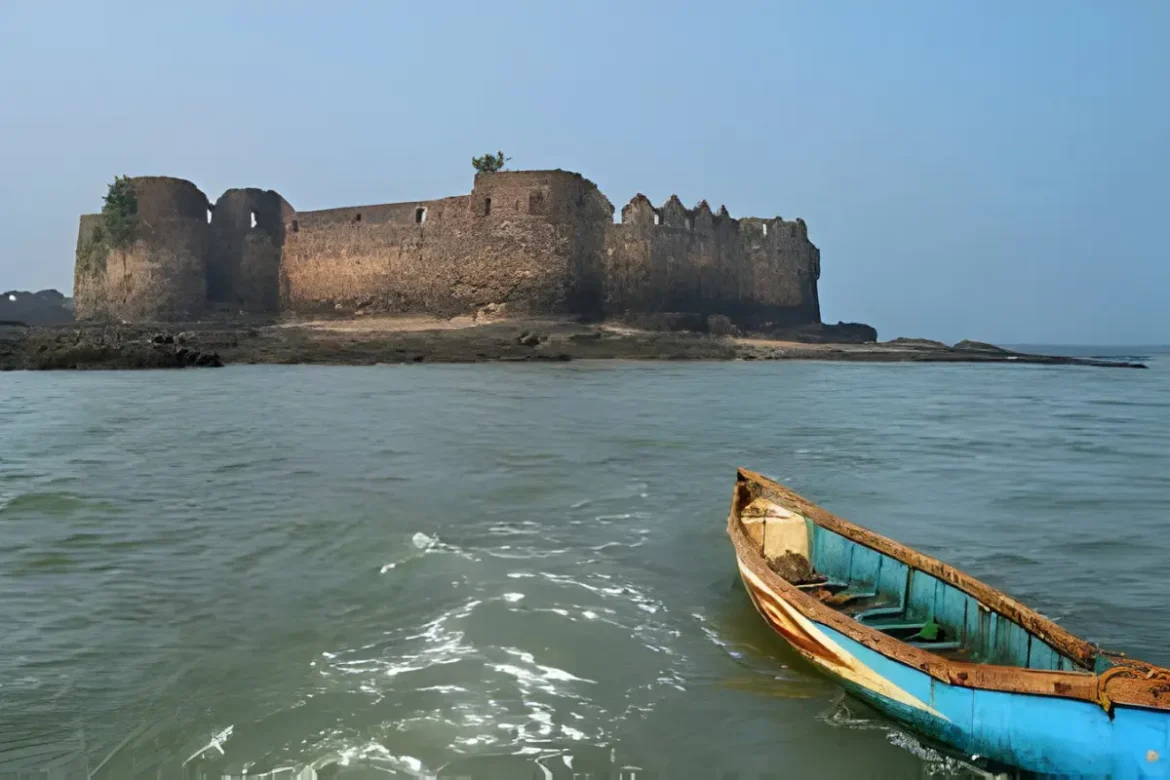Table of Contents
If you are a history lover, this article is for you. Padmadurg’s story is intricately woven with the ebb and flow of the Konkan, a testament to human ingenuity and history’s enduring power. You can find the complete Padmadurg Fort itinerary on this page. Maps, locations, things to do, tips for travelling, and much more information will be included. You will be able to enjoy the fort better if you do this.
Overview of Padmadurg Fort
| Location | Raigad District, Maharashtra, India |
| Height | Approximately 30 metres (98 feet) above sea level. |
| Built by | Chhatrapati Shivaji Maharaj in 1676 |
| Purpose | Challenge the Siddis of Janjira and gain naval superiority |
| Current Use | Largely in ruins, undergoing restoration |
| Best time to visit | October to March (pleasant weather) |
| Difficulty level | Moderate |
| Time required | A few hours |
| Boat ride to the fort | ₹300 (round trip) |
| Guide (optional) | ₹100 – ₹200 |
History of Padmadurg Fort
The Maratha king Shivaji constructed Padmadurg (Lotus Fort) in 1676 to respond to the Siddis’ mighty Janjira fort. Its strategic location on a rock in the Arabian Sea helped control naval activity and challenge Janjira’s dominance. Though never conquered, Padmadurg witnessed heroic attempts by Maratha warriors like Moro Pant to capture Janjira. Today, it is a testament to Shivaji’s naval ambitions and the fierce battles fought for maritime control.
How Difficult Is The Padmadurg Fort Trek?
The Padmadurg Fort Trek is often described as easy to moderate, but there’s more to it than a simple label. Here’s a breakdown to help you decide if it’s suitable for you:
Terrain:
- Moderate: Most of the trail is a well-defined path with ups and downs.
- Steep Sections: Be prepared for some steeper sections, especially closer to the fort. These require using your hands for balance occasionally.
- Uneven Surfaces: The path can be uneven, with loose rocks and steps carved into the hillside.
- Stairs: There are several flights of stairs, some of which might be uneven or broken.
Fitness Level:
- Manageable for Most: A moderate level of fitness is enough for this trek. You should be comfortable walking for a few hours with some inclines.
- Challenging for Beginners: If you’re not used to regular physical activity, this trek could be challenging. Consider starting with shorter, easier hikes to build endurance.
Additional Considerations:
- Time of Day: The trek can be tiring under the hot sun. Opt for early mornings or evenings, especially during summer.
- Weather: Rain can make the trail slippery and increase the difficulty. Avoid trekking during heavy rains.
- Gear: Wear sturdy hiking shoes with good ankle support for uneven terrain. Carry enough water (at least 3 litres) and wear sunscreen and a hat for sun protection.
Who should go:
- Beginners With Moderate Fitness: If you’re new to trekking but have decent fitness, Padmadurg can be a good introduction, with stunning views as a reward.
- Families With Active Kids: Older children who are used to walking can enjoy this trek with proper supervision due to the uneven terrain and some steep sections.
- History and Nature Enthusiasts: The fort itself offers a glimpse into history, and the surrounding area boasts scenic beauty.
Who might find it difficult:
- Young Children or Those With Limited Mobility: The uneven terrain and stairs might be challenging for young children or people with mobility issues.
- People With a Fear of Heights: While not extreme, there are sections of the fort overlooking the sea, which might be uncomfortable for those with a fear of heights.
When Is Padmadurg Fort The Best Time To Visit?
- Pleasant Weather: October to March is the peak season in Maharashtra, so the weather is pleasant and there are plenty of events and festivals happening. However, it can also be crowded and expensive.
- Fewer Crowds: April-May and September-October are the shoulder seasons, with comfortable temperatures and fewer crowds.
- June to September: Rain and high temperatures are common during the monsoon season, so there are better times to visit. Although the fort is less crowded, the lush greenery is stunning.

Places To Visit Near Padmadurg Fort
- Murud Janjira Fort (walking distance from the Fort)
- Kashid Beach (21 km)
- Diveagar Beach (21 km)
- Murud Beach ( 5 km)
- Velas Beach ( 42 km)
- Harihareshwar Temple (24 km)
- Anjanvel Waterfall (40 km)
- Phansad Wildlife Sanctuary ( 28 km)
- Raigad Fort (85 km)
- Alibaug Beach (102 km)
Map
How to Reach Padmadurg Fort
There are no direct ferries to Padmadurg; you will need to hire a private boat and obtain permission from the Navy or Coast Guard before setting off on your sea adventure. Here’s how to reach Padmadurg:
By Air:
- Padmadurg Fort is about 180 kilometres from Mumbai’s Chhatrapati Shivaji International Airport (BOM).
- You can reach Murud, the village closest to the fort, by taxi or cab from Mumbai. Around 4–5 hours are required for the journey.
- In addition to being the fastest, this option is also the most expensive.
By Train:
- Padmadurg Fort is about 15 km from Murud Junction, the nearest railway station.
- Murud Junction is accessible by train from Mumbai and Pune.
- Once you reach Murud Junction, you can take a taxi or rickshaw to the fort.
By Road:
- If you are coming from Mumbai or Pune, this route will take you to Padmadurg.
- A taxi or private car can be rented from Mumbai or Pune. Approximately three to four hours are required for the journey.
- From Mumbai or Pune, you can take a state transport bus to Murud. Approximately 5–6 hours are required for the journey.
- A boat can be taken from Rajapuri Jetty to Murud Fort once you reach Murud. It takes around 30 minutes to ride the boat.

Where to Stay Padmadurg Fort
Here are some options for places to stay in Murud:
- The Kolaba Retreat: This is a luxurious resort located right on the beach in Murud. It has a private beach, a swimming pool, and a spa.
- The MTDC Resort: This is a more budget-friendly option located in Murud. It has a variety of rooms and cottages to choose from, as well as a restaurant and a swimming pool.
- Golden Swan Beach Resort: This colonial-style resort boasts subdued rooms and cottages with beach access, buffet dining, and a playground for kids. It is one of the most popular resorts near the Fort.
- Sawali Niwas Nyahari: This functional hotel offers modest rooms with straightforward decor and air-conditioning. It also provides parking for guests.
- Janki Villa: This homestay is a great option for those who want to experience local hospitality. Homestays typically offer a more personal touch than hotels or resorts.
- S.A. Golden Resort: This resort is another option for those who are looking for a more luxurious stay. It features a swimming pool, a children’s play area, and a restaurant.
What Should I Bring to Padmadurg Fort?
- Permission from the Navy/Coast Guard: Since it’s an island fort, you will need permission to enter. You can contact the local authorities to get permission.
- Sturdy shoes: The fort is in ruins and the terrain can be uneven, so you’ll want to wear shoes that provide good traction.
- Hat and sunglasses: The sun can be intense in Maharashtra, so be sure to protect yourself from the sun.
- Water: There are no facilities on the fort to buy food or drinks, so be sure to bring plenty of water with you.
- Camera: The fort is a beautiful and historic place, so you’ll want to take some pictures.
- Snacks: If you’re planning on spending a few hours at the fort, you may want to pack some snacks.
- Sunscreen and insect repellent: Sunscreen and insect repellent are always a good idea when spending time outdoors in India.
- Binoculars: If you’re interested in getting a closer look at the fort’s features or the surrounding area, you may want to bring binoculars.
FAQs of Padmadurg Fort
What was the purpose of the fort?
It was built to challenge the control of the Siddis of Janjira and to gain naval superiority in the region.
Is the Fort open to the public?
Yes, but permission from the Navy or Coast Guard is required to visit.
What is the architectural style of Padmadurg?
The architectural style of Padmadurg Fort is not well-documented, but it may reflect Mughal influences common in the region during its construction period.
What is the best time to visit the Fort?
The best time to visit Padmadurg is during the winter months (October to February) when the weather is pleasant.
Is there an entry fee for Padmadurg Fort?
Free, there is no entry fee

